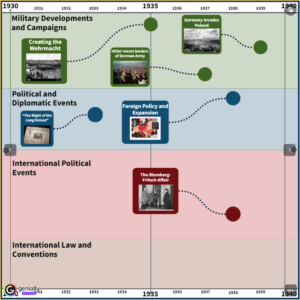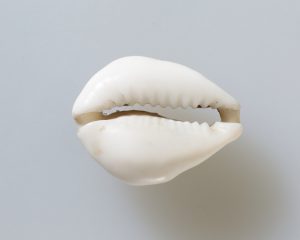Many people know of the Mexican holiday Día de Los Muertos, which is filled with vibrant colors and intricately painted faces. What many people don’t know is that this holiday originated over 3000 years ago with the Aztec empire. The Spanish Conquistadors first recorded a Día de Los Muertos celebration during the 16th century. When the Aztecs had begun this tradition, they weren’t remembering loved ones who passed, but they were worshiping the queen of the underworld and protector of the dead.1

This Aztec queen was Mictecacihuatl, “Lady of the Dead,” Queen of Mictlan.2 According to Aztec legend, Mictecacihuatl was sacrificed as an infant and placed in the underworld to become the wife of Miclantecuhtl, the king of the underworld. In the underworld, her role was to watch over the bones of past lives, which would be used to create new life in the living world. However, in order for the bones to be able to create new life, they needed to be stolen from Mictecacihuatl to be brought to the living world. As their protector, part of her own life would be carried with the stolen bones. Even after the bones were stolen, she would continue her duty to protect them by returning to the living world every year to make sure the bones were being properly taken care of. When the time came for her to return to the living world, the Aztecs celebrated Mictecacihuatl’s return with death festivals and traditional dances, to honor her for her protection of the bones that created life and to seek protection for those who died.3

The Aztecs celebrated Día de Los Muertos much differently than it is celebrated today due to the Spanish conquistadors and Catholicism. The Spanish changed the lives of the indigenous peoples wherever they went, from taking land for the Spanish throne to converting people to Catholicism. Many traditions changed, including those of Día de Los Muertos.4 The Aztecs laid out offerings for the King and Queen of the Underworld for the whole month of August, and the Spanish were the first outsiders to witness this honoring of Mictecacihuatl by the Aztecs. Not long after the Spanish exposure to this festival, the Spanish combined the Aztec tradition with Catholicism. Syncretism, the blending of Spanish and indigenous beliefs and practices, combined the Aztec traditions of Día de Los Muertos with the Spanish traditions of All Saint’s Day and All Souls Day.5 Some examples of syncretism between Catholicism and Día de Los Muertos are the symbols that are most recognizable with Día de Muertos, such as decorated skulls and skeletons, and the Spanish character “La Catrina,” who represents Mictecacihuatl.6 The merging of Catholicism with the Aztec religious beliefs began the evolution of how Día de Los Muertos, transforming how it is celebrated today.

Despite that the name Día de Los Muertos translates to Day of the Dead in English, the holiday is actually the celebration of life. Día de Los Muertos doesn’t focus on death and mourning of a loved one. It’s seen as a happy celebration where family members of all generations, deceased and alive, can be together as one. The traditions of this holiday have changed from honoring the queen of the underworld Mictecacihuatl to honoring those who have passed.7 It’s a time of colorful festivals and parades, beautifully painted colorful skulls, marigold flowers, decorated ofrendas, grave site visits and the smells of traditional Mexican foods and incense in the air. Although it is primarily celebrated in Mexico, some parts of the United States, especially cities and towns on the Mexican border, have adopted the tradition and celebrate the remembrance of their deceased loved ones.
- MasterFILE Complete, 2008, s.v. “Día de los Muertos, by Benjamin Perea. ↵
- Sin Jones, Mictecacihuatl, Santa Muerte, 2010, 1-16. ↵
- Sin Jones, Mictecacihuatl, Santa Muerte, 2010, 1-16. ↵
- Mark Lacy, Origins of El Día de Los Muertos: The Prehispanic Festival of the Dead Defies Cultural Invasions of Mexico, (History Institute for Culture), 1. ↵
- Mark Lacy, Origins of El Día de Los Muertos: The Prehispanic Festival of the Dead Defies Cultural Invasions of Mexico, (History Institute for Culture), 1. ↵
- Mark Lacy, Origins of El Día de Los Muertos: The Prehispanic Festival of the Dead Defies Cultural Invasions of Mexico, (History Institute for Culture), 1. ↵
- Christina Zarate, Día de Los Muertos, (Smithsonian National Museum of American History), 2-7. ↵



114 comments
Matthew Swaykus
We do not take into account the strange similarities between far flung cultures enough. When reading this story, I couldn’t help but pause at the words “[death] that created life.” We can find the same concept of sacrificing for the good of the whole utilized in other religious pantheons, including Norse mythology and the Abrahamic religions. They are also very similar, particularly to Norse mythology, because many of the old traditions held by the Aztecs were stripped of their original meanings. It is a sad affair that the lasting image of this great empire is one of human sacrifice and bloodshed when, in reality, their piety wasn’t too different from ours.
Paola Arellano
I have recently watched the movie, Coco and thought that it was truly a beautiful thing. Although I do come from a Mexican family, we have never really celebrated the holiday of “El did de los metros” and it saddens me that we haven’t. Mexican culture is one of the richest in beauty in my opinion and I am very glad that there was an article on this site that was able to highlight the beauty of the culture. It was very well written and the author did a great job of highlighting the origin on the holiday. It was not just about what the holiday is and who celebrates it but I enjoyed reading of how the Aztecs began with the idea and how it shaped and molded an entire day. Of course, everyone has their own interpretation and may do it differently but at the end of the day, it is really good to learn more about your culture and read more about how it started.
Cameron Lopez
I liked this article because I am Hispanic but I don’t really celebrate this like true Mexicans do. Although I know much about this topic from reading articles like this one over time and of course from the movie Coco. (I’m joking). Although Coco doesn’t really portray how this is really celebrated, it is cool to read many different articles on this topic to get the overall view and explanation on this to get the best understanding.
Fatima Navarro
This article was so interesting and educational. I learned so much, even though I’ve known el Dia de los Muertos all my life because I am Mexican myself. Though, us Mexicans don’t really celebrate it the way it’s portrayed in movies, e.g Coco, it is so interesting to know the real meaning behind the celebration and remembrance of our deceased family members.
Makenzie Santana
Dias De Los Muertos is such a beautiful holiday, and their yearly traditions have been kept on for years. To now know that the Aztecs were the ones to originate this celebration of the dead and making something so dark into something colorful and bright is crazy. I really hadn’t known enough about his holiday or the Aztec culture and this article gave me great insight about it.
Nadia Carrasco
Celebrating Dia de los Muertos each year I really had no idea about the origin of the holiday. This article did a great job at explaining the history behind it and had me hooked all the way through. I find it so fascinating how this tradition came to be from the Aztec origin and the Lady of the Dead. I also find it really fascinating how Dia de los Muertos has moved and spread through the US. This just shows how powerful the tradition really is. Overall great article, very impressed.
Christopher Metta Bexar
I also found the original source of Dia de Los Muertos to be fascinating.
I might have expected as with Christmas and some other celebrations it was a combining of the religion of the conquerors with the religious day of the conquered.
I can however completely understand the Aztec festival of worship and how they would continue it even after losing their land and empire to the Spanish.
Ivan Preusser
I was never aware of the Aztec origins of Dia De Los Muertos, but after reading the article it makes perfect sense, and also changes my perspective of the traditions surrounding the celebration. I think that it provides a reason to have honor and be humble to your ancestors, as the Lady of the Dead’s sacrifice was for others rather than herself. The beginnings of this tradition were different too, and it was interesting to see the changes in how it’s celebrated today.
Dalton Moy
I found this article very interesting. I had no idea that Dias Los Muertos had originated from Aztec culture. I also found the explanation of the origin of La Catrina helpful, because I never really understood her character’s significance. I always enjoy exploring culture and how it is adopted and adapted between different groups of people. Dias De Los Muertos is a beautiful celebration, and I am very glad that I now know its early origins.
Eric Ortega Rodriguez
I knew what Día de Los Muertos was but never understood why it was celebrated or where it came from. Through this article, I learned that it originated from Mictecacihuatl, queen of the underworld, who was sacrificed as an infant. I also found it interesting how actual meaning behind Día de Los Muertos is not celebrating the dead, but quite the opposite, it is celebrating life and the opportunity to be with family. I also find it really fascinating that this celebration has even extended to some areas within the United States, which demonstrates how powerful cultural diffusion can be. Overall, this was a very well written and informative article.